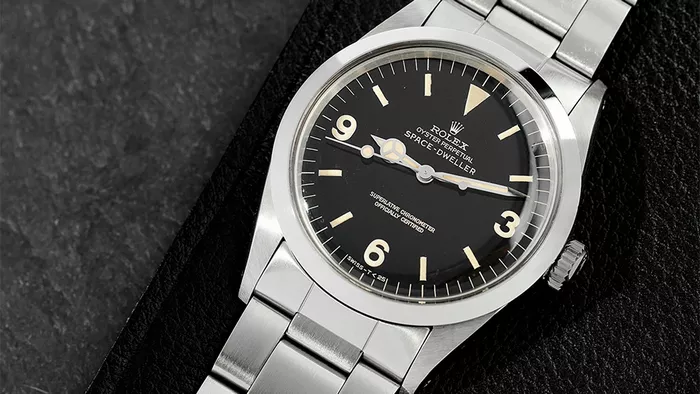When luxury watches are mentioned, Rolex invariably tops the list. Celebrated for its unparalleled precision and elegance, Rolex has established itself as a benchmark of status, worn by celebrities, athletes, and discerning collectors around the globe. Beyond its impressive craftsmanship, Rolex has made a substantial impact on sports and the arts, sponsoring elite events such as Wimbledon and the 24 Hours of Le Mans.
Known for its exceptional gold and silver timepieces, Rolex’s storied history is deeply intertwined with Swiss horological excellence. From the groundbreaking Oyster—the first waterproof wristwatch—to iconic models like the Submariner and Daytona, Rolex has consistently set the standard for quality and innovation.
The Birth of a Legend
Rolex’s journey began over a century ago, rooted not in Switzerland but in London. Founded in 1905 by 24-year-old German Hans Wilsdorf and his brother-in-law, Alfred Davis, the company was initially named “Wilsdorf and Davis.” The duo started by assembling and selling high-quality wristwatches, focusing on precision and reliability.
Wilsdorf’s vision for Rolex was clear from the start: to deliver superior timepieces. To achieve this, he sourced Swiss movements from Bienne, a city renowned for its watchmaking expertise. The choice of the name “Rolex,” officially registered in 1908, was driven by its brevity, ease of pronunciation, and elegance, helping the brand quickly gain international recognition.
A Legacy of Precision
Rolex’s pursuit of precision has led to several groundbreaking achievements. In 1910, Rolex was awarded the Swiss Certificate of Chronometric Precision—the first wristwatch to receive this honor from the Official Watch Rating Centre in Bienne. Four years later, the Kew Observatory in the UK granted Rolex a “Class A” precision certificate, a distinction previously reserved for marine chronometers used in navigation.
Post-World War I, Rolex relocated its headquarters to Geneva, Switzerland, partly to escape the heavy taxes on luxury imports and high export duties on precious metals. This move solidified Rolex’s commitment to excellence in a nation synonymous with horological craftsmanship.
Innovations in Timekeeping
Rolex’s history is marked by pioneering innovations. In 1926, the company introduced the Oyster, the world’s first waterproof and dustproof wristwatch. Its durability was famously tested in 1927 when Mercedes Gleitze wore the Oyster during her successful swim across the English Channel, emerging after 10 hours with the watch still functioning perfectly.
In 1931, Rolex unveiled the Perpetual movement, a self-winding mechanism that revolutionized watchmaking. This innovation allowed Rolex watches to wind automatically through the motion of the wearer’s wrist, enhancing convenience and precision.
The 1950s and 60s saw Rolex further cement its reputation with the development of professional timepieces. Notably, Sir Edmund Hillary and Tenzing Norgay wore Rolex watches during their historic 1953 ascent of Mount Everest. The introduction of models like the Datejust in 1957—featuring the first date display on the dial—and the Deep Sea in 1960—engineered for deep-sea diving—underscored Rolex’s dedication to reliability and robustness.
Modern-Day Excellence
In the 21st century, Rolex continues to innovate with features such as Cerachrom bezels, crafted from highly durable ceramic material that resists scratches. The Rolex Deepsea Challenge, designed for filmmaker James Cameron’s 2012 dive into the Mariana Trench, exemplifies the brand’s commitment to extreme performance. Certified waterproof to 12,000 meters, it remains the deepest diving watch ever created.
Rolex’s enduring legacy is a testament to its relentless pursuit of precision and excellence. The brand’s iconic timepieces, whether crafted from gold, silver, or cutting-edge materials, remain symbols of luxury, reliability, and style in the world of horology.

